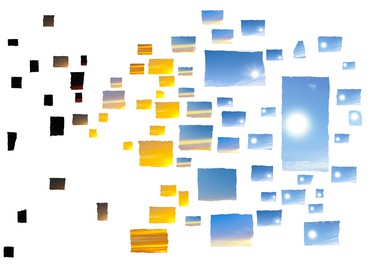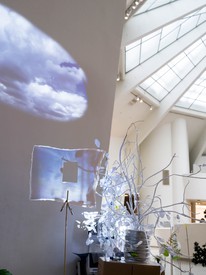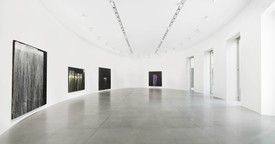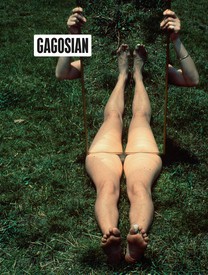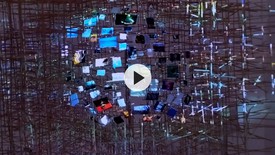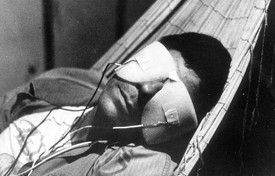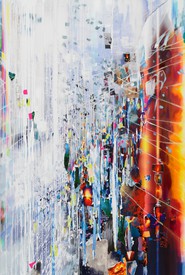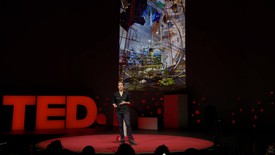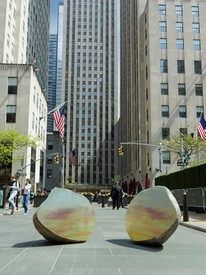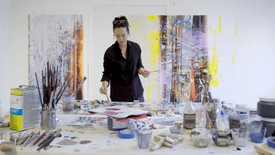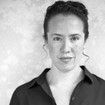
Sarah Sze’s art utilizes genres as generative frameworks, uniting intricate networks of objects and images across multiple dimensions in sculpture, painting, drawing, printmaking, and video installation. Her works prompt microscopic observation while evoking a macroscopic perspective on the infinite.
When a studio becomes very active, you find works. They appear. This collage started as just a remnant lying around in the studio, but over time it stood out as a work in itself.
Its first use was as a tool to work out the concept for a huge permanent public artwork. The collage is about 2 1/2 feet long and 1 foot wide, made up of hundreds of individual, torn-up photographic images strewn across a sheet of paper; the finished sculpture will be spherical and at a scale of 50 by 25 feet.
I wanted to record the sky over New York during the span of an entire day, but what’s more important is that the photographs could have been taken anywhere in the world, or on any day—yesterday or in 200 bc. So the collage has an anytime, any-place timelessness to it, and yet it has an intimate quality. Somehow you sense that it is one specific day: one dawn, one dusk.
I needed it in fragments to create a gradient, where I could move the elements around like cards in a deck, or a palette. When you set up a traditional painter’s palette, you can then understand how to mix colors. It creates a way of making decisions, of understanding a color before you even start a painting. In the collage, I was using the torn fragments of photographs like strokes of color, in the way they appear in nature.
The dark outer edges are dawn and dusk, and at the center—which represents noon—the sun is so strong that the image is blown out completely, a sort of perfect reflection of what a photograph is—just a way of recording light. Of course dawn and dusk are brief moments in the day, but they have a way of “burning into time” in a more significant way; if calculated rationally, they would be just tiny dots on the spectrum, a few minutes out of hundreds of minutes of daylight. Because the photographs were taken at evenly timed intervals, there are many, many more images than appear here. But I didn’t want a regular ticking recorder of what the sky looked like every single minute, but instead to play around with how time waxes and wanes: correspondingly, every image was printed at a different size.
The collage is like a wall calendar, a diary, or a deconstructed datebook; these forms embrace our compulsion to create little boxes of time to make sense of our lives passing. The collage is more intuitive than mathematical because it tries to measure what a day feels like, how it is perceived, how one day is remembered to the next—no matter how absurd, futile even, that effort is.
This visual timekeeper is idiosyncratic, fragile, and approximate; the fragments are of many different sizes; torn, not cut, uneven at the edges. It is not about finding a true perceptual frame or tool for reality, but more about how tenuous the effort to measure is, in and of itself. The collage in the studio is just a temporary grouping of elements; if you sneeze, it’s gone! So my effort to figure it out is present in all the odd formal decisions that involve irregularity, anomaly, randomness—all human qualities that computers don’t compute. It has the rhythm of life, where the space between things is never the same.
Text © Sarah Sze; edit: Louise Neri

